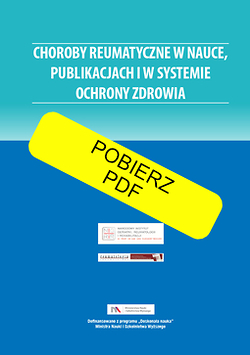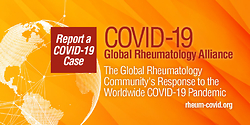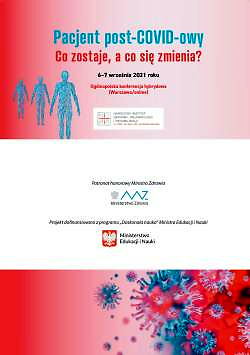|
1/2010
vol. 48
Artykuł oryginalny
Postępująca twardzina układowa o niepomyślnym przebiegu u mężczyzn
Marzena Trzaska-Sobczak
,
Reumatologia 2010; 48, 1: 45-48
Data publikacji online: 2010/04/09
Pobierz cytowanie
Introduction
Systemic sclerosis (SSc) is a chronic connective tissue disorder characterised by progressive fibrosis of the skin and subcutaneous tissue, occurrence of Raynaud’s phenomenon and other vascular abnormalities as well as internal organ involvement due to fibrosis, especially within the lungs, heart, kidneys and alimentary tract [1-3]. It affects females much more often than males [2, 3] but the disease prognosis is worse in males [4]. The course of the disease and its severity have various clinical characteristics, from a relatively benign condition to a rapidly progressive disease with a high risk of mortality [5, 6]. The disease duration may also vary from months to decades [7]. The prevalence and type of organ involvement depend mainly on the subtype (limited, diffuse) of the disease. Limited SSc is characterized by the occurrence of anti-centromere antibodies and thickening of skin distal to the elbows and knees. Diffuse cutaneous SSc is characterized by the occurrence of anti-Scl70 antibodies and the presence of skin thickening proximal to elbows and knees. Pulmonary fibrosis and pulmonary arterial hypertension are the leading causes of morbidity in patients with SSc [4, 5, 8, 9].
Objectives
Retrospective analysis of clinical outcomes of five male patients with particularly severe and rapidly progressive diffuse SSc with a fatal outcome with emphasis on organ involvement and results of diagnostic tests.
Material and methods
In the last few years among patients with SSc hospitalized in our centres, five patients with particularly rapidly progressive disease were distinguished. Despite aggressive treatment, the disease led to a fatal outcome in a short time. Their clinical history and results of diagnostic tests were evaluated.
Analysed patients were males with diffuse systemic SSc diagnosed according to the American College of Rheumatology classification criteria.
The extent of skin involvement was evaluated with modified Rodnan skin score (mRs) (the result presented in the paper is the result measured during the last hospitalization of the individual). ANA, anti-Scl70 and anti-centromere antibodies were detected using an ELISA test. Organ involvement was diagnosed on the basis of symptoms and the results of diagnostic tests. Pulmonary involvement was defined as bibasilar pulmonary fibrosis revealed on HRCT scan. Renal involvement was defined as age-related creatinine clearance <80 ml/min, proteinuria. Cardiac involvement was defined as palpitations, conduction disturbances, ventricular arrhythmia, heart failure or persistent pericardial effusion detected by echocardiography. Myositis was defined as increased CK serum levels, changes in electromyography (EMG) and concomitant muscle weakness. Articular involvement was defined as synovitis and swelling with or without tenderness to palpation. Oesophageal involvement was defined as dysphagia, odynophagia or intermittent heartburn and was investigated by barium swallowing. Intestinal involvement was defined as bowel disturbances, and evaluated by colonoscopy. Pulmonary hypertension was defined as systolic pulmonary arterial pressure (sPAP) > 35 in colour Doppler echocardiography. History of smoking was also evaluated. All of the patients were treated with pulses of cyclophosphamide (1000 mg/4 weeks). Two of them were treated with low doses of prednisone orally. All of them were treated with an angiotensin-converting enzyme (ACE) inhibitor and a proton pump inhibitor.
Results
First skin symptoms of SSc appeared after the age of 50 in four of the patients. One patient was 35 years old at the time of the first skin symptoms. All of them were smokers and three of them did not stop smoking after the recognition of SSc diagnosis. Laboratory findings revealed positive Scl70 antibodies, negative anti-centromere antibodies and increased acute phase reactants (ESR, C-reactive protein – CRP) in all of the patients. Most of them had increased CK values. During the disease rapidly progressive severe organ involvement was observed. It included: progressive pulmonary fibrosis, cardiac involvement, pulmonary arterial hypertension, intestinal and oesophageal involvement, and renal involvement (table I). The skin thickening increased rapidly in all of the patients to reach 28-42 mRs score at the last hospitalization, and they died within 12-24 months after the first signs of skin thickening had appeared. Acute cardiac failure was the cause of death. The results are presented in tables I and II.
Discussion
Compared to the general population the risk of death is increased in patients with SSc. In the currently published literature the mortality ratio in SSc ranges between 1.5 and 7.2 [3, 9]. Renal, cardiac and pulmonary involvement are considered as important predictors of mortality. The presence of anti-Scl70 antibodies is associated with an additional 1.3-fold increase in risk [7, 10]. In the currently published literature, investigators point to factors associated with poor prognosis in SSc. They include: diffuse skin involvement [4], male sex [4], older age at the onset of SSc [11], internal organ manifestations [6, 9], pigmentation disturbances, and nailfold capillary loss seen on capillaroscopy [11]. Anti-Scl70 antibodies, anaemia, increased ESR, increased CRP level, abnormal urine sediment, and proteinuria without scleroderma renal crisis are also considered as poor prognostic factors. Pulmonary hypertension and myositis were reported to be connected with poor prognosis [5]. Presence of anti-centromere antibodies is reported as a favourable prognostic factor [5, 6]. The results of the study conducted by Czirják et al. [6] provided evidence that a malignant disease diagnosed within four years after SSc had been diagnosed also caused a poor outcome. Simeon et al. [11] reported that in a group of 79 patients with SSc lung involvement, renal crisis and age at diagnosis over 60 years were the variables associated with decreased survival. Furthermore, the extent of skin involvement is regarded as an important prognostic factor [4, 9, 11].
Evaluation of geographical differences of disease manifestations reported by authors analysing the EULAR Scleroderma Trials and Research (EUSTAR) group database revealed that eastern European centres care for patients with more severe SSc manifestations than the rest of Europe [12]. Another study analysing the EUSTAR database found that older age at onset of the disease and the presence of anti-Scl70 antibodies are independent risk factors for severe organ manifestations [2].
Conclusions
The described cases suggest possible distinction of a subset of a subgroup of patients with a particularly severe and rapidly progressive disease. It might be a population of patients with the following characteristics: males with older age at the onset of the disease with high titres of anti-Scl70 antibodies, increased acute phase reactants and elevated CK levels. History of smoking may contribute to acceleration of the course of the disease. This is consistent with the presently published data on the factors associated with fatal prognosis in patients with SSc.
References
1. Masi AT, Rodnan PG, Medsger TA, et al. Subcommitee for scleroderma criteria of the American Rheumatism Association Diagnostic and Therapeutic committee. Preliminary criteria for the classification of systemic sclerosis (scleroderma). Arthritis Rheum 1980; 23: 581-590.
2. Walker UA, Tyndall A, Czirják L, et al. Clinical risk assessment of organ manifestations in systemic sclerosis: a report from the EULAR Scleroderma Trials And Research group database. Ann Rheum Dis 2007; 66: 754-763.
3. Hunzelmann N, Genth E, Krieg T, et al. The Registry of the German Network for Systemic Scleroderma; frequency of disease subsets and patterns of organ involvement. Rheumatology (Oxford) 2008; Aug; 47: 1185-1192.
4. Hesselstrand R, Scheja A, Akesson A. Mortality and causes of death in a Sweedish series of systemic sclerosis patients. Ann Rheum Dis 1998; 57: 682-686.
5. Chwiećko S, Sierakowski S, Kowal-Bielecka O. Analiza przyczyn zgonów chorych na twardzinę układową. Pol Merk Lek 2006; 124: 341-344.
6. Czirják L, Kumánovics G, Varjú C, et al. Survival and causes of death in 366 Hungarian patients with systemic sclerosis. Ann Rheum Dis 2008; 67: 59-63.
7. Jacobsen S, Halberg P, Ulman S. Mortality and causes of death of 344 Danish patients with systemic sclerosis (scleroderma). Br J Rheumatol 1998; 37: 750-755.
8. Steen VD, Medsger TA. Changes in causes of death in systemic sclerosis. 1972–2002. Ann Rheum Dis 2007; 66: 940-944.
9. Hachulla E, Carpentier P, Gressin V, et al. Risk factors for death and the 3-year survival of patients with systemic sclerosis: the French ItinérAIR-Sclérodermie study. Rheumatology 2009; 48: 304-308.
10. Ioannidis JP , Vlachoyiannopoulos PG, Haidich AB et al. Mortality in systemic sclerosis: an international meta analysis of individual patient data. Am J Med 2005; 118: 2-10.
11. Simeon CP, Armandas L, Fonollosa V, et al. Mortality and prognostic factors in Spanish patients with systemic sclerosis. Rheumatology 2003; 42: 71-75.
12. Walker UA, Tyndall A, Czirják L, et al. Geographical variation of disease manifestations in systemic sclerosis: a report from the EULAR Scleroderma Trials and Research (EUSTAR) group database. Ann Rheum Dis 2009; 68: 856-862.
Copyright: © 2010 Narodowy Instytut Geriatrii, Reumatologii i Rehabilitacji w Warszawie. This is an Open Access article distributed under the terms of the Creative Commons Attribution-NonCommercial-ShareAlike 4.0 International (CC BY-NC-SA 4.0) License (http://creativecommons.org/licenses/by-nc-sa/4.0/), allowing third parties to copy and redistribute the material in any medium or format and to remix, transform, and build upon the material, provided the original work is properly cited and states its license.
|
|

 ENGLISH
ENGLISH












